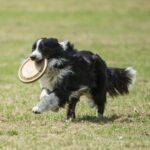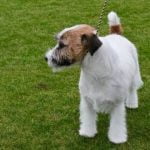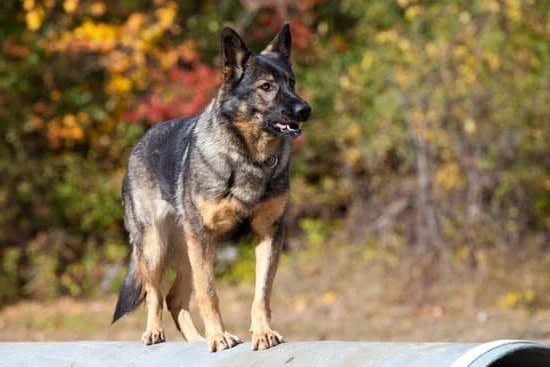Hound dogs are known for their keen sense of smell and independent nature, but just how hard is it to train them? Training a hound dog poses unique challenges that require patience, adaptability, and a deep understanding of the breed’s characteristics. In this article, we will explore the obstacles faced when training hound dogs and provide insights into effective training techniques tailored to their instincts.
Hound dogs are a distinctive group of breeds known for their exceptional scent-tracking abilities. From the bloodhound to the beagle, these dogs possess an innate drive to follow scents, which can make training them more challenging compared to other breeds. Their strong instincts often lead them astray during training sessions or outdoor activities. Additionally, their independent nature can result in stubbornness and resistance to commands.
Understanding the hound dog breed is crucial when it comes to successful training. Hound dogs have a rich history rooted in hunting and tracking game. As a result, they typically have a strong prey drive and tenacious focus on scents. These traits can both hinder and help during training sessions. It is important for trainers to recognize and work with these natural instincts in order to achieve desired results.
In the following sections of this article, we will delve deeper into the specific challenges faced when training hound dogs and provide valuable tips for success. We will also explore various methods that work well with this breed’s unique characteristics.
Whether you are a new owner attempting to train your first hound dog or an experienced trainer looking for fresh insights, this article aims to equip you with the knowledge needed to navigate the exciting journey of hound dog training effectively.
Understanding the Hound Dog Breed
Hound dogs are a unique breed with distinct characteristics that set them apart from other types of dogs. To effectively train a hound dog, it is essential to understand their breed-specific traits and instinctual qualities. This section will provide an overview of hound dogs as a breed, detail their history, general temperament, and explain how these traits affect their trainability.
Overview of Hound Dogs
Hound dogs belong to a diverse group of breeds known for their exceptional tracking and hunting abilities. From the Bloodhound to the Basset Hound, each hound dog breed exhibits specific traits that make them well-suited for tracking scents and trailing game. Hounds typically have acute senses of smell and hearing, making them particularly skilled at following scent trails over long distances.
Historical Background and Instinctual Qualities
The history of hound dogs can be traced back centuries when they were bred for hunting purposes. Selective breeding has refined their natural abilities over time, resulting in breeds specifically designed for various roles such as hunting rabbits, tracking down wounded animals, or treeing raccoons. Their instinctual qualities include persistence, determination, and an intense focus on scents.
These characteristics can pose challenges when it comes to training hounds. They often become easily distracted by smells or sights in their environment, which may lead to difficulty in maintaining focus during training sessions. Additionally, some hounds can exhibit stubbornness or independence due to their inherent nature as hunting dogs.
Impact on Trainability
The unique traits of hounds can both hinder and enhance their trainability. On one hand, their strong instincts may make obedience training more challenging as they may prioritize following scents over obeying commands. However, if properly channeled and trained from an early age using appropriate methods tailored to their instinctual qualities, hound dogs can become highly trainable and obedient companions.
It is important to approach hound dog training with patience, understanding, and a willingness to adapt training methods to suit their specific needs. With the right approach and consistent training efforts, hound dogs can learn to utilize their natural abilities in constructive ways, making them valuable partners in various activities such as search and rescue, scent detection work, or simply well-behaved pets.
Importance of Early Socialization and Training
Early socialization and training play a crucial role in shaping the behavior and trainability of hound dogs. Hound dogs, known for their independent nature and strong instincts, require early intervention to ensure they develop into well-rounded and obedient companions.
One of the key reasons why early socialization is vital for hound dogs is to prevent behavioral issues from emerging later in life. Hound dogs have a natural inclination to follow scents and investigate their surroundings. Without proper socialization, they may become overly reactive or fearful in certain situations. By exposing them to a variety of people, animals, and environments at an early age, owners can help hound dogs become more confident, adaptable, and less prone to anxiety or reactivity.
Socialization also helps hounds learn appropriate behaviors and manners around other pets or animals. Due to their innate hunting instincts, hounds have a tendency to chase smaller animals such as squirrels or rabbits. Early exposure to different animals can teach them how to interact appropriately with other pets in the household or prevent any unnecessary aggression towards smaller creatures.
In addition to socialization, early training is essential for hound dogs as it helps establish obedience and set boundaries. Hounds are known for their stubbornness; however, with consistent training from an early age, this trait can be managed effectively.
Basic commands such as sit, stay, come, and leave it are not only necessary for general manners but also provide important safety measures when out on walks or off-leash. Furthermore, training enhances mental stimulation for hounds which relieves potential destructive behaviors that may arise from boredom.
By starting socialization and training as early as possible – ideally during the puppy stage before bad habits develop – owners set the foundation for a well-behaved hound dog that will thrive in various environments and social interactions.
| Benefits of Early Socialization and Training | Examples |
|---|---|
| Prevents behavioral issues from emerging later in life | Hound dogs are less reactive or fearful in new situations due to early exposure. |
| Create an adaptable and confident companion | Hound dogs confidently navigate different environments and interact well with other animals. |
| Establish obedience and prevent destructive behaviors | Early training sets the foundation for a well-behaved hound dog. |
Patience & Persistence
Training a hound dog can be quite challenging, requiring an ample amount of patience and persistence. The unique characteristics and natural instincts of hound dogs often make them resistant to traditional training methods. However, with the right mindset and approach, it is possible to successfully train these lovable yet stubborn creatures.
One of the essential skills for hound dog training is patience. Hound dogs are known for their independent nature and strong instincts, which can sometimes make them seem unresponsive or aloof during training sessions. It is important not to get frustrated or discouraged when progress seems slow or nonexistent. Consistency in training methods and a calm demeanor are key factors in building trust and maintaining a positive learning environment for hound dogs.
Persistence is another crucial skill when it comes to training hound dogs. Due to their natural instincts as hunting animals, hounds can be easily distracted by scents or other stimuli in their surroundings.
This means that they may need repeated reminders and consistent reinforcement to stay focused on the desired behavior or command. Consistently reinforcing positive behaviors, utilizing rewards that motivate your specific hound dog, and maintaining a structured training schedule can help overcome any challenges presented during the training process.
Developing patience and persistence can be easier said than done but adopting certain strategies can aid in effectively training a hound dog. First, setting realistic expectations is vital – understanding that progress will come slowly but surely helps prevent frustration on both sides.
Second, taking breaks when necessary allows you and your furry friend time to decompress before returning to the task at hand. Lastly, incorporating plenty of positive reinforcement throughout each training session boosts morale for both you and your hound dog.
| Key Skill | Description |
|---|---|
| Patience | Hound dogs can be resistant to traditional training methods due to their independent nature and strong instincts. Patience is needed when progress seems slow or nonexistent. |
| Persistence | Hound dogs can easily get distracted by scents and other stimuli in their surroundings. Consistent reinforcement and reminders are necessary for them to stay focused on desired behaviors or commands. |
Tailoring Training Methods for Hound Dogs
Hound dogs are a unique breed with distinct characteristics that require tailored training methods. When it comes to hound dog training, it is essential to understand their instincts and natural behaviors in order to effectively train them. This section will explore various training methods that work well for hound dogs and discuss the differences between positive reinforcement, clicker training, and traditional techniques.
One effective training method for hound dogs is positive reinforcement. Hound dogs respond well to rewards such as treats or praise when they exhibit desired behaviors. Using positive reinforcement helps to motivate these dogs and encourages them to repeat those behaviors in the future. For example, when teaching a hound dog basic obedience commands like sit or stay, it is important to reward them with treats or praise immediately after they perform the desired action.
Clicker training is another popular method that can be effective for hound dogs. This technique involves using a clicker to mark the desired behavior as soon as it occurs and then rewarding the dog. The sound of the clicker becomes associated with a reward, making it easier for hound dogs to understand what behavior is being reinforced. Clicker training can be especially useful when teaching complex commands or tricks.
In addition to positive reinforcement and clicker training, some hound owners may choose to use traditional techniques such as leash correction or verbal reprimands. However, it is important to approach this type of training with caution and ensure that it is done in a gentle and humane manner. Hound dogs are sensitive creatures, so harsh training methods can be counterproductive and may even damage the trust between the dog and owner.
When tailoring training methods for hound dogs, it is crucial to take into consideration their natural instincts. These breeds have a strong prey drive and an excellent sense of smell. Incorporating activities that allow them to utilize their natural abilities can make training more enjoyable for both the dog and owner. For example, scent-based games such as hide-and-seek or scent tracking exercises can help hound dogs channel their natural instincts while also reinforcing obedience commands.
Harnessing the Scent
Hound dogs are known for their exceptional sense of smell, and one of the most valuable skills that can be developed in hound dog training is harnessing this natural ability through scent training. Scent training is not only a fun and engaging activity for hound dogs, but it also serves practical purposes such as search and rescue work or even participation in scent-based sports like nosework or tracking.
In this section, we will explore the significance of scent training for hound dogs, the process of teaching them to track scents, and provide step-by-step instructions for introducing scent training.
The significance of scent training for hound dogs cannot be overstated. Hound breeds have been selectively bred over centuries to excel in trailing scents, making them exceptional hunters or searchers. Engaging their olfactory senses through scent training not only taps into their natural instincts but also provides mental stimulation that helps to keep these active and intelligent dogs fulfilled. Additionally, scent training can help build focus, improve their overall confidence, and enhance their problem-solving abilities.
When introducing scent training to a hound dog, it is important to start with basic foundation exercises before progressing to more complex tasks. Begin by associating a specific odor with a reward using positive reinforcement techniques. Choose an easily detectable odor such as anise or lavender oil.
Pair the odor with treats or toys during short sessions so that your hound dog associates the scent with something pleasurable. Gradually increase the difficulty by introducing distractions or hiding the scented object in different locations.
Once your hound dog has become proficient in associating the specific odor with a reward, you can progress to more advanced scent tracking activities. Use long tracks made by dragging a scented article such as a towel across various surfaces while gradually increasing distance and difficulty level.
This will encourage your hound dog to follow the trail using its innate sense of smell. You can also introduce games like “Find It” where you hide scented objects and encourage your hound dog to search for them using its scenting abilities.
Overcoming Challenges
Training a hound dog comes with its fair share of challenges due to their unique quirks and characteristics. However, with the right approach and techniques, it is possible to overcome these challenges and achieve successful training outcomes.
One common quirk often associated with hound dogs is their stubbornness. These dogs are known for being independent thinkers and may resist following commands if they don’t see the purpose behind them. To address this challenge, it’s crucial to establish yourself as the leader and consistently enforce boundaries and rules. Consistency is key, as hounds can quickly take advantage of any inconsistencies in training methods.
Another quirk that hound dog owners frequently encounter is their independence. Hound dogs have a strong instinct to follow their nose and explore scents, which can make them easily distracted during training sessions. It’s important to work on building focus and attention through exercises that engage their natural instincts. For example, incorporating scent-based games or activities into the training routine can help keep them motivated and interested.
Distractibility can also be a challenge when training a hound dog. These dogs have a keen sense of smell that can lead them astray during training sessions if there are interesting smells in the environment. It’s essential to create a controlled environment for training, free from distractions such as other animals or strong smells that may divert their attention. Gradually increasing distractions as the dog becomes more proficient in following commands can help improve their focus over time.
Overall, overcoming these quirks requires patience, resilience, and adaptability in your training approach. Understanding the breed’s instincts and working with them rather than against them will go a long way in achieving successful outcomes in hound dog training. By employing positive reinforcement techniques, setting clear boundaries, and tailoring training methods to suit their specific needs, you can effectively tackle these challenges and develop a strong bond with your hound dog.
The Rewards of Training
Building a strong bond with your hound dog is one of the most rewarding aspects of training. When you invest time and effort into training your hound dog, you not only improve their behavior and obedience but also establish a deep connection with them. This section will highlight the long-term benefits of training a hound dog and discuss the profound relationship that can be formed.
The Power of Communication
Training provides an avenue for effective communication between you and your hound dog. Through consistent training sessions, you establish a common language and understanding with your furry companion. As you teach them commands, such as sit, stay, or come, they learn to recognize your cues and respond accordingly. This clear communication fosters trust and mutual respect, which is essential for building a strong bond.
A Sense of Accomplishment
As your hound dog progresses in their training journey, both of you will experience a sense of accomplishment. Witnessing their growth and improvement can be incredibly rewarding for any dog owner. Whether it’s successfully completing an obedience trial or mastering a complex scent-tracking exercise, these small wins contribute to the strengthening of your bond. The pride you feel in their achievements brings you closer together as partners.
Enhanced Companionship
A well-trained hound dog is not only a well-behaved pet but also an ideal companion. Your efforts in training will create harmony in your household and allow for more enjoyable experiences together. When your hound dog understands what is expected of them and behaves appropriately in different situations, you can include them in various activities without worrying about undesirable behaviors or aggression. Your bond grows stronger as they become an integral part of your life.
Promoting Mental Stimulation
Training exercises stimulate your hound dog’s mind and prevent boredom, resulting in increased contentment and overall well-being. Mental stimulation is just as important as physical exercise for a hound dog’s mental health. Engaging their intellect through training keeps them mentally sharp and alleviates behavioral issues that may arise from boredom or frustration. By consistently providing mental challenges, you will build a deep connection with your hound dog based on their continued enrichment.
Building a strong bond with your hound dog through training requires patience, dedication, and consistency. It is an ongoing process that extends beyond basic obedience commands and into various aspects of everyday life. The rewards of a deep bond with your hound dog are immeasurable, as they become not just a pet but also an irreplaceable companion who understands and responds to you on a whole new level.
Conclusion
In conclusion, training a hound dog requires patience, adaptability, and the willingness to build an unbreakable bond. Throughout this article, we have explored the unique challenges of training hound dogs, from their instinctual qualities to their independent and stubborn nature. However, with early socialization, persistence, and tailored training methods, it is possible to successfully train and form a strong bond with these loyal companions.
One of the key takeaways from this article is the importance of starting hound dog training early in their lives. Early socialization plays a crucial role in shaping their behavior and improving trainability. By exposing them to various environments, people, and other animals at a young age, hound dogs can learn to be more adaptable and sociable throughout their lives.
Patience and persistence are also essential skills when training a hound dog. It is important to remember that these dogs have a strong sense of independence and may require extra time and effort compared to other breeds. By staying patient during the training process and maintaining consistency in your approach, you can achieve successful outcomes.
Ultimately, the rewards of training a hound dog are well worth the effort. These dogs can form incredibly strong bonds with their owners when properly trained. With dedication and understanding, you can develop a profound relationship with your hound dog based on trust, respect, and mutual companionship.
Frequently Asked Questions
Are hounds difficult to train?
Hounds can be somewhat challenging to train due to their independent nature and strong hunting instincts. They are known for being highly focused on scents and can easily become distracted during training sessions. It’s important to understand that hounds have a strong sense of smell and will often follow their noses, which can make it harder to keep their attention during training.
However, with patience, consistency, and positive reinforcement techniques, hounds can certainly be trained successfully. It’s crucial to provide them with mental stimulation and engage their natural instincts while teaching them obedience commands.
Are hound dogs hard to take care of?
Taking care of hound dogs requires some specific considerations but is not necessarily hard. Hounds have distinct needs such as regular exercise, particularly in the form of long walks or runs, to help them release energy and fulfill their hunting instincts. Adequate mental stimulation is also crucial, as boredom can lead to destructive behaviors or excessive barking in hounds.
Additionally, hound breeds generally shed moderately throughout the year, which means they require regular grooming upkeep like brushing to keep their coats healthy and minimize shedding indoors. Overall, providing proper care for a hound dog necessitates commitment and understanding of their unique requirements but should not be overly challenging.
Are hound mix dogs easy to train?
The trainability of hound mix dogs largely depends on the specific breed mix and individual temperament traits inherited from each parent breed. Like purebred hounds, hound mixes often display an independent streak coupled with an instinctual desire to follow scents diligently. This means that training a hound mix may involve dealing with some of the challenges encountered when training purebred hounds.
However, mixed-breed dogs can also exhibit a more adaptable nature due to genetic diversity from both parents’ influence. Therefore, while it may take some extra effort at times, consistent training methods combined with patience and positive reinforcement techniques should yield good results when working with a hound mix dog.

Welcome to the blog! I am a professional dog trainer and have been working with dogs for many years. In this blog, I will be discussing various topics related to dog training, including tips, tricks, and advice. I hope you find this information helpful and informative. Thanks for reading!





